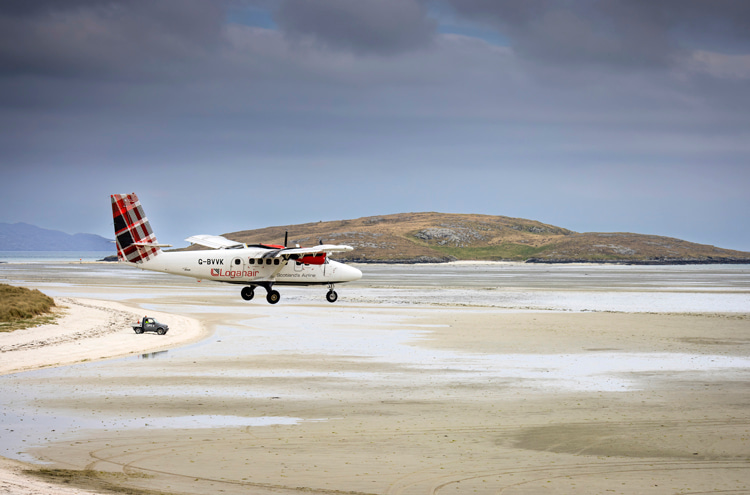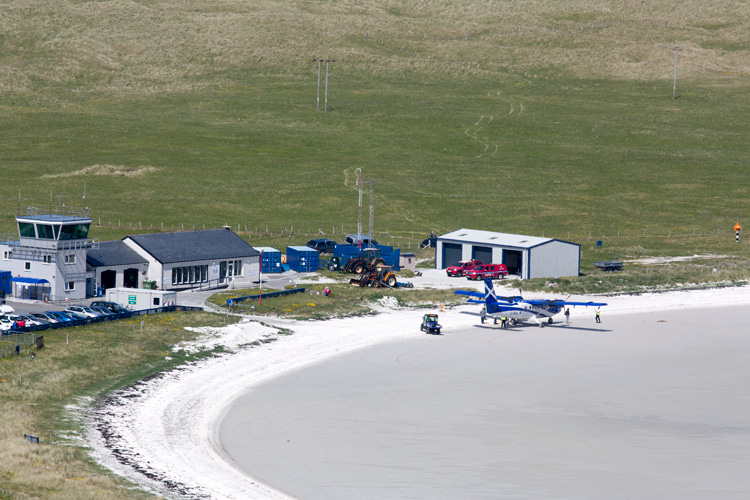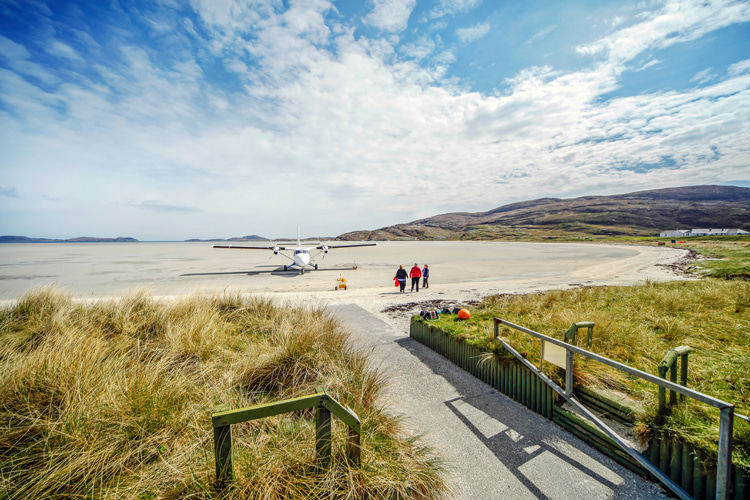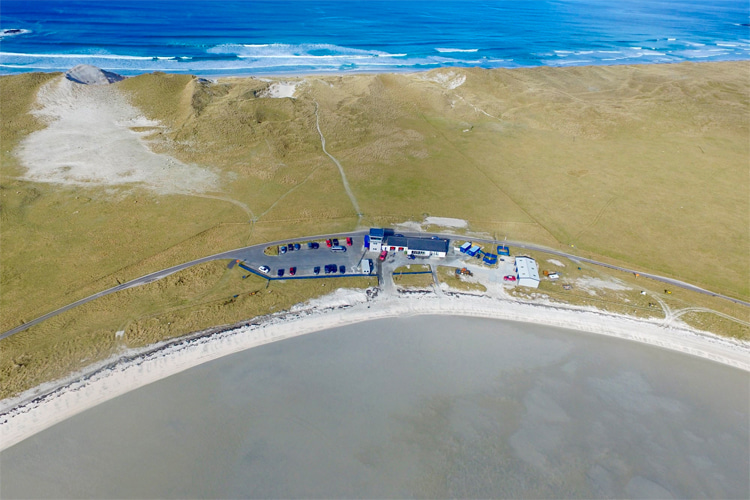Welcome to Barra Airport. Please mind the seawater while leaving the aircraft. Thank you and enjoy your surfing.
Imagine an island on which you can arrive by plane, and five minutes later, you could be catching your first wave.
It's not a fantasy or dream it's for real.
Barra Airport, also known as Barra Eoligarry Airport, is a unique and remarkable airport located in the Outer Hebrides, Scotland, United Kingdom.
With around one thousand inhabitants, the Isle of Barra is a stunning place with lots of history, endless green fields, and breathtaking white sandy beaches.
However, one of its most unusual features and attractions is the airport.

Landing and Taking Off Depending on the Tide
Barra Airport is globally renowned for its beach runway, the only one in the world where scheduled flights land on a beach.
What makes Barra Airport's operation fascinating is its dependence on tidal patterns.
The takeoff and landing area, marked by buoys that move with the tide, requires pilots to be acutely aware of the tides to ensure safe operations.
During high tide, the runways are submerged under the North Atlantic waves. At low tide, this sandy runway becomes accessible.
This natural ebb and flow means that flight times vary, aligning with the sea's rhythm.
Let's not forget that the tidal range (difference in water height between high tide and low tide) at Barra Airport can be more than ten feet (three meters).
However, even when the tide is outside the markers, there are occasional puddles here and there on the landing runways, making the pilot's work harder and different every time they land.
There is no autopilot mode when approaching Barra - it's all manual, human skill.
And if the waves are pumping, you can leave the aircraft with your wetsuit on, walk 200 meters, and surf Traigh Eais, a beach pretty much exposed to the pumping northwest North Atlantic swells.
The little Scottish paradise can experience four seasons in one day.

Small Planes Only
Barra Aiport opened in 1936.
This short-runway airport, or STOLport, is located at the northern tip of the island, in the wide shallow bay of Traigh Mhòr.
The airport operates with three runways arranged in a triangle, marked by wooden poles at their ends, in directions 07/25, 11/29, and 15/33.
These runways, submerged at high tide, are meticulously managed to allow the DHC-6 Twin Otter, the primary aircraft serving the airport, to land into the wind.
The plane can take up to 15 passengers and two pilots.
Larger aircraft cannot land here. And even the small DHC-6 Twin Otter must sometimes turn back due to extreme conditions - for instance, blizzard.
Despite its unconventional setting, Barra Airport maintains the full trappings of a regional airport, except for a conventional runway.
The airport holds a Civil Aviation Authority Ordinary Licence, allowing flights for the public transport of passengers or flying instruction.
However, it is not licensed for night use.
Emergency flights can operate at night, with vehicle lights used to illuminate the runway and reflective strips laid on the beach.

A Once-In-A-Lifetime Experience
Flying into or out of Barra is not just a journey - it's an unbelievable experience.
The airport's scenic location and the breathtaking views of aircraft landing on the sand runway draw aviation enthusiasts and tourists alike.
In fact, in 2011, Barra Airport was voted the world's top airport approach.
While the beach runway is the highlight, Barra Airport offers more.
It's equipped with facilities like car parking, waiting areas, and a visitor center, ensuring comfort for travelers.
The beach itself is a hub of activity, frequented by cockle pickers and tourists, who are reminded to check the windsock for airport operations.
"Keep off the beach when the wind sock is flying, and airport is active," a sign reads.
When the wind sock is not flying, the beach is open to everyone.
Visitors can also explore ancient standing stones and picturesque villages and enjoy the warm hospitality of the locals, known for their vibrant community spirit.
Over 14,000 passengers land on the Isle of Barra every year.
The world's only airport operating on a tidal beach operates two daily flights to and from Glasgow, each taking around 57 minutes.
